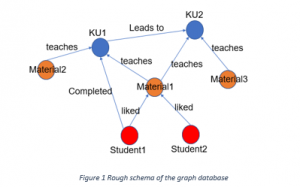 Congratulations to Associate Professor Goh Yang Miang for obtaining the MOE Tertiary Research Fund (MOE-TRF) Grant Call 2019 for his project titled “Intelligent Adaptive Learning Platform for Structural Systems”. He is the 1st Principle Investigator (PI) in the university to be awarded two MOE-TRF projects in two consecutive grant calls.
Congratulations to Associate Professor Goh Yang Miang for obtaining the MOE Tertiary Research Fund (MOE-TRF) Grant Call 2019 for his project titled “Intelligent Adaptive Learning Platform for Structural Systems”. He is the 1st Principle Investigator (PI) in the university to be awarded two MOE-TRF projects in two consecutive grant calls.
Details of the project are as follows:
Personalised learning could be brought to an online intelligent adaptive learning platform (IALP) to provide alternative learning paths and materials to suit each student’s profile. Safety and Resilience Research Unit (SaRRU) from NUS Department of Building is set on pioneering and developing an IALP for PF2102 Structural Systems. Currently, SaRRU has developed a mobile application called Virtual and Augmented Reality for Structures (VARS) which uses virtual and augmented reality technology to teach Structural System. You can learn more about VARS here.
How does IALP work?
The proposed approach is to make recommendations on learning package and pathways to students based on graph analytics. Students will receive a recommendation on the next learning package to reach a goal and recommendation on materials that they should read to accomplish the learning outcomes. The following will explain more in detail the two separate types of recommendations that are being proposed:
- Learning Path Recommendation: which packages they need to complete to reach the targeted learning outcomes or goals
- Learning Materials Recommendation: which materials should they read to complete the module
A tripartite graph is proposed to merge the graphs of learning paths and learning materials as shown in Figure 1.

Figure 1 Rough schema of the graph database
Whereby,
- Each Knowledge Unit (KU) vertex represents a unit knowledge of the structural system module and contains a URL to a test in VARS, and the student is deemed to have acquired the KU if the student passed the test in VARS,
- Each Material vertex consists of the URL to a learning resource, and
- Each Student vertex represents the profile of an existing student
The most appropriate path search algorithms and the most appropriate user-item recommendation algorithm can be researched based on the designed graph database to recommend learning paths and learning materials for a student. Each student will receive recommendation on the next KU based on their goal and recommendation on materials that they should read to accomplish the KU.




